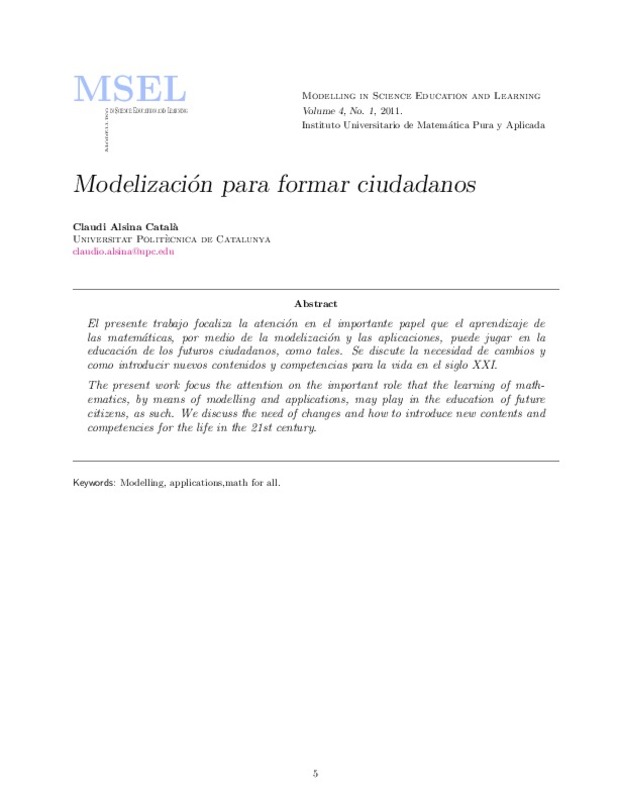JavaScript is disabled for your browser. Some features of this site may not work without it.
Buscar en RiuNet
Listar
Mi cuenta
Estadísticas
Ayuda RiuNet
Admin. UPV
Modelizacion para formar ciudadanos
Mostrar el registro completo del ítem
Alsina Català, C. (2011). Modelizacion para formar ciudadanos. Modelling in Science Education and Learning. 4:5-14. https://doi.org/10.4995/msel.2011.3051
Por favor, use este identificador para citar o enlazar este ítem: http://hdl.handle.net/10251/100884
Ficheros en el ítem
Metadatos del ítem
| Título: | Modelizacion para formar ciudadanos | |
| Autor: | Alsina Català, Claudi | |
| Fecha difusión: |
|
|
| Resumen: |
[EN] The present work focus the attention on the important role that the learning of mathematics, by means of modelling and applications, may play in the education of future citizens, as such. We discuss the need of changes ...[+]
[ES] El presente trabajo focaliza la atención en el importante papel que el aprendizaje de las matemáticas, por medio de la modelización y las aplicaciones, puede jugar en la educación de los futuros ciudadanos, como tales. ...[+]
|
|
| Palabras clave: |
|
|
| Derechos de uso: | Reconocimiento - No comercial (by-nc) | |
| Fuente: |
|
|
| DOI: |
|
|
| Editorial: |
|
|
| Versión del editor: | https://doi.org/10.4995/msel.2011.3051 | |
| Tipo: |
|








